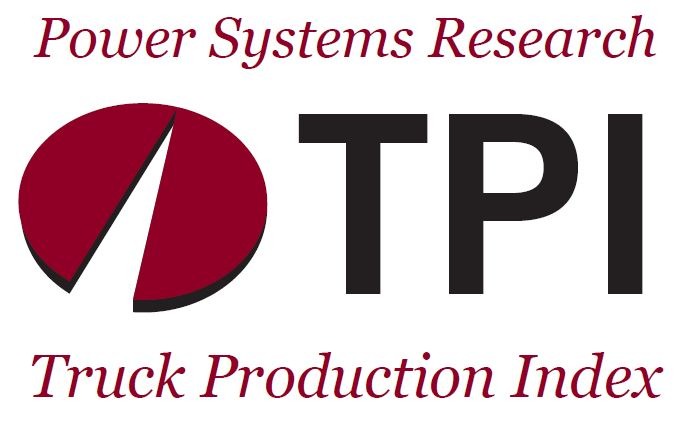
St. Paul, MN (April 13, 2021)— The Power Systems Research Truck Production Index (PSR-TPI) dropped 42.5% for the three-month period ended March 31, 2021, declining from 186 to 107, from the fourth quarter of 2020. The year-over-year (Q1 2020 to Q1 2021) improvement for the PSR-TPI was 15%, in which it climbed from 93 to 107.
The PSR-TPI measures truck production globally and across six regions: North America, China, Europe, South America, Japan & Korea and Emerging Markets.
This data comes from OE Link™, the proprietary database maintained by Power Systems Research.
Global Index. While the decline in commercial vehicle demand in China will lower global vehicle demand this year, improved demand is expected in all other regions.
All Regions. Except for China, demand for medium and heavy commercial vehicles has bottomed out and is expected to increase this year and into 2022 as the various economies improve and Coronavirus vaccinations increase. The market will also experience periodic supply chain disruptions primarily due to the impact from the Coronavirus.
North America. Since the latter part of last year, heavy commercial truck orders have been extremely strong as freight rates remain very high. Both contract rates and spot rates are currently in record territory primarily driven by consumer spending, a strong housing market and an improving manufacturing sector. The anticipation of the stimulus spending and increasing vaccination rates for Covid-19 are also driving optimism in the economy. However, supply chain issues particularly regarding semiconductors will be the biggest obstacle for sustainable production this year.
Europe. Last year, medium and heavy commercial truck sales declined by 25.7% in the EU. Heavy truck sales declined by 27.3% and bus registrations dropped by 21% compared with 2019. However, order rates have shown significant strength during the past six months and sales are expected to improve significantly this year, primarily for the heavy truck segment. The biggest impediment to improved sales will likely be issues surrounding the supply chain for vehicle components and materials as a result of the impact from the Coronavirus.
South Asia. Commercial vehicle demand is expected to improve for much of this region this year. After a 53% decline in Indian MHCV production last year, an improvement of 35% is expected in 2021. While this is good news, it will still be a few years before Indian demand reaches more historic levels. The segment will continue to face headwinds due to excess capacity in the market, driver shortages, increased rail freight usage, relative constant freight rate, and booming fuel prices. The PLI scheme implemented by the government will provide some push to the Indian market from 2022.
South America. Medium and heavy commercial vehicle production declined by approximately 25% in 2020 with medium and heavy buses seeing the sharpest decline. While orders and production improved during the fourth quarter of 2020, concerns about supply chain disruption could hinder production levels this year. With increased vaccinations and a more stabilized regional economy, PSR expects production to return to pre-pandemic levels later this year.
Japan/Korea. After a significant decline in medium and heavy commercial vehicle demand last year, Japan and Korean production is expected to rebound this year and into 2022 for both the domestic and export markets. An improving global economy along with increased Coronavirus vaccines will help drive the improvement in demand. However, due to ongoing supply chain disruptions production levels are expected to be somewhat volatile this year.
Greater China. Demand for heavy trucks is expected to be down sharply this year as a result of the Chinese governmental requirement to replace all China III and lower emission vehicles with vehicles meeting China V or China VI emission standards by the end of last year. This along with stricter punishment of overloaded vehicles and the implementation of the Euro VI emission regulations in July will slow demand particularly in the last half of the year. The cost of the emission technology for Euro VI vehicles are not offset with any significant improvement in fuel economy which will likely lead to some level of truck pre-buy during the first half of this year. PSR


